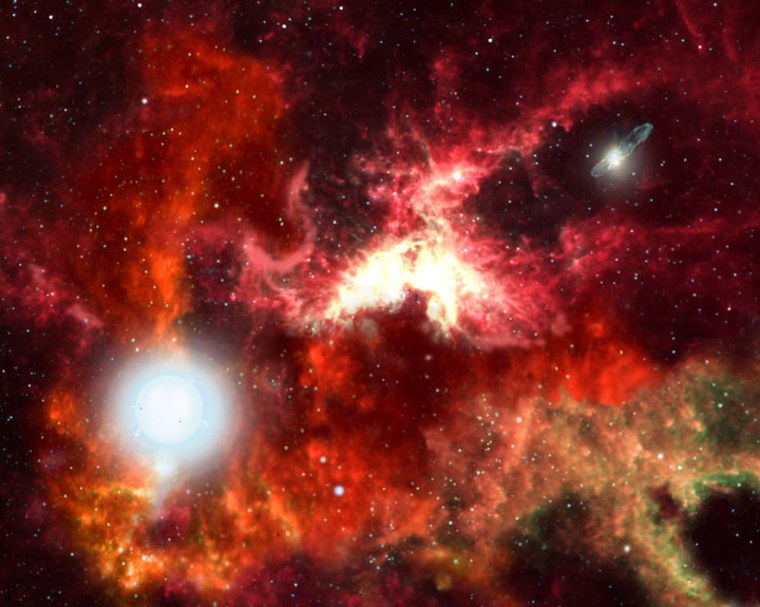The first stars after the Big Bang were immense, superhot giants that lived briefly and then exploded as brilliant supernovae, but they seeded the universe with basic elements that were the building blocks for the sun and Earth, and for life itself, according to a new study.
Current theory holds that the universe began with the Big Bang, an event that caused space to expand in a fraction of a second from a tiny speck to an immensity bathed in heat and radiation. It took an estimated 300 million years for the universe to cool and for the first stars to form from hydrogen and helium.
But those were far different from Earth's star, the sun, and most other stars in the universe now.
"The stars were simple, pure hydrogen and helium," said Volker Bromm, an astronomer for the Harvard-Smithsonian Center for Astrophysics. And the universe was "smooth and boring." The vital ingredients that eventually turned the universe into a complex and lively place did not then exist.
Computerized model
Bromm and Abraham Loeb, also of Harvard-Smithsonian, used supercomputers to model the cycles of star formation that occurred after the Big Bang. They reported their findings Tuesday at the national meeting of the American Astronomical Society.
Those early stars were immense, extremely hot and very short-lived. After just a few million years, they collapsed and exploded as supernovae.
In that violence were created the heavier elements "that completely changed the universe," said Bromm. Elements from oxygen to carbon to iron were blasted into space where they eventually became part of a new generation of stars.
The next generation of stars were rich in carbon and oxygen, but had little iron. These stars shone longer than the first generation, but spent a long, lonely existence, with no planets.
"These stars were like the sun, but a very lonely sun," said Bromm. There was still not enough heavy metals to form planets, he said, and those stars "would live and die in solitude."
'Window for life'
Supernovae continued to explode, seeding the universe with more and more heavy metals. Eventually, there were enough of these metals to create long-lived stars and for planets to accrete into their orbits. On at least one planet, Earth, all the ingredients came together in the right place and time for life to evolve.
"The window for life opened sometime between 500 and 2 billion years after Big Bang," Loeb said in a statement.
Precisely when conditions were right for planets is still a mystery, Bromm said.
"The threshold for planet formation is still a question and we don't know the answer as yet," he said.
Role of early stars
But what is clear, said Bromm, is the role those very early stars played in the universe of today.
"We owe our existence in a very direct way to all the stars whose life and death preceded the formation of our sun," he said. "And this process started right after the Big Bang with the very first stars."
The solar system may not be the only place it happened. More than 100 extrasolar planets — planets orbiting stars other than the sun — have been discovered. All of these planets orbit stars that are rich in heavy metals, supporting the idea that stars with heavy elements are more likely to have families of planets.
